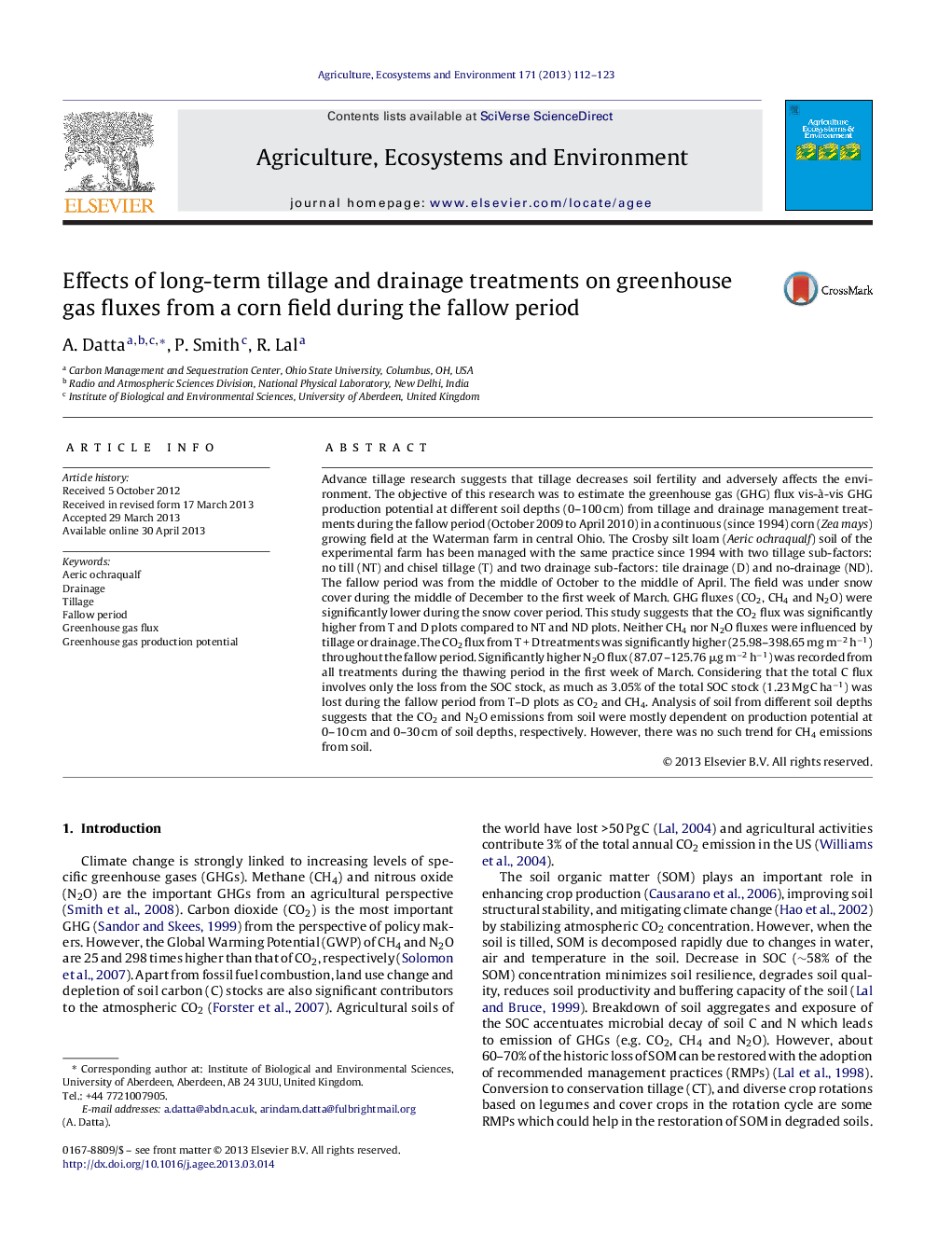| Article ID | Journal | Published Year | Pages | File Type |
|---|---|---|---|---|
| 2414268 | Agriculture, Ecosystems & Environment | 2013 | 12 Pages |
•GHG emission from long-term drainage and tillage management plots in central Ohio during fallow period.•Significantly high CO2 flux from tillage and drainage plots.•~30–40% of cumulative N2O flux of the fallow period was recorded during the thawing period.•Significantly higher CH4 production potential in no-tillage + no-drainage plots.•CO2 and N2O emission from soil may be attributed to the production in 0–10 cm and 0–20 cm soil depths respectively.
Advance tillage research suggests that tillage decreases soil fertility and adversely affects the environment. The objective of this research was to estimate the greenhouse gas (GHG) flux vis-à-vis GHG production potential at different soil depths (0–100 cm) from tillage and drainage management treatments during the fallow period (October 2009 to April 2010) in a continuous (since 1994) corn (Zea mays) growing field at the Waterman farm in central Ohio. The Crosby silt loam (Aeric ochraqualf) soil of the experimental farm has been managed with the same practice since 1994 with two tillage sub-factors: no till (NT) and chisel tillage (T) and two drainage sub-factors: tile drainage (D) and no-drainage (ND). The fallow period was from the middle of October to the middle of April. The field was under snow cover during the middle of December to the first week of March. GHG fluxes (CO2, CH4 and N2O) were significantly lower during the snow cover period. This study suggests that the CO2 flux was significantly higher from T and D plots compared to NT and ND plots. Neither CH4 nor N2O fluxes were influenced by tillage or drainage. The CO2 flux from T + D treatments was significantly higher (25.98–398.65 mg m−2 h−1) throughout the fallow period. Significantly higher N2O flux (87.07–125.76 μg m−2 h−1) was recorded from all treatments during the thawing period in the first week of March. Considering that the total C flux involves only the loss from the SOC stock, as much as 3.05% of the total SOC stock (1.23 Mg C ha−1) was lost during the fallow period from T–D plots as CO2 and CH4. Analysis of soil from different soil depths suggests that the CO2 and N2O emissions from soil were mostly dependent on production potential at 0–10 cm and 0–30 cm of soil depths, respectively. However, there was no such trend for CH4 emissions from soil.
